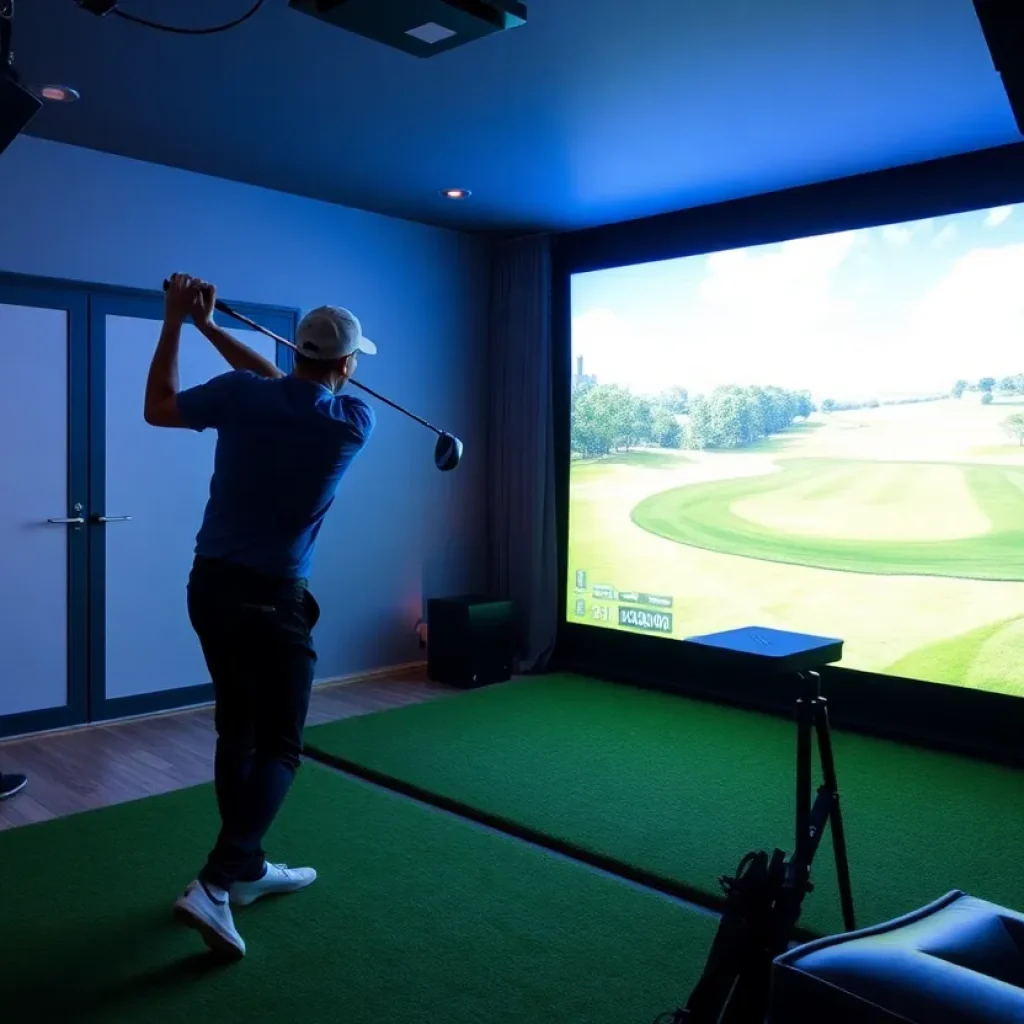Virtual Golf Simulators: How Realistic Are They?
The rise of virtual golf simulators has transformed how golfers practice and enjoy the game. With advancements in technology, these simulators promise to replicate real golfing conditions. But how realistic are they? In this article, we explore the technology behind virtual golf simulators, their accuracy, and how they stack up against traditional golf experiences.
The Technology Behind Virtual Golf Simulators
Virtual golf simulators use a combination of hardware and software to recreate the experience of playing golf without stepping onto an actual course. The key components include:
- Launch Monitors: These devices track the ball’s speed, spin, and trajectory as it is hit. They use radar or camera systems to capture data with high precision.
- Software: The software interprets the data collected by the launch monitors and simulates the ball’s flight on a virtual course. Popular software includes TrackMan, Foresight Sports, and SkyTrak.
- Projection Screens: Many setups utilize large screens or simulators with immersive visuals, providing players with a realistic depiction of the golf course.
- Sensors and Cameras: Some simulators use high-speed cameras and sensors to analyze swing mechanics, helping players refine their technique.
Measuring Realism: Accuracy and Feedback
The realism of a virtual golf simulator largely depends on its accuracy. Key factors influencing this include:
1. Data Collection
High-quality simulators collect extensive data during each shot. This includes launch angle, club speed, ball speed, and spin rate. For instance, the data from a launch monitor should correlate closely with real-world measurements taken on the course.
2. Course Simulation
Virtual courses are often modeled after real-life courses. The details, including terrain, hazards, and green speeds, are meticulously designed to mirror their real counterparts. Players can choose from various courses, including famous golfing venues worldwide.
3. Swing Mechanics Analysis
Some simulators offer features that analyze swing mechanics in-depth. This can provide players with actionable insights. By receiving detailed feedback, golfers can identify areas for improvement, similar to having a coach present during practice.
Real-world Comparisons
To fully understand how realistic virtual golf simulators are, it’s essential to compare them to real-world golf experiences:
1. Feel and Touch
One area where simulators often fall short is in the tactile experience. Hitting a golf ball off a mat does not replicate the feel of grass. However, many high-end simulators attempt to bridge this gap, offering adjustable mats that imitate different grass types.
2. Environmental Factors
The unpredictability of outdoor elements such as wind, weather, and terrain cannot be fully replicated. While simulators can simulate wind and other conditions, it doesn’t equate to the ever-changing aspects of a natural course.
3. Game Dynamics
Game dynamics change with real-life interactions—playing with others, the atmosphere of being on a course, and pacing are elements that a simulator cannot replicate. The social aspect of golf is significant, and while simulators can offer multiplayer modes, they still cannot fully match the dynamic of traditional play.
Advantages of Virtual Golf Simulators
Despite some limitations, virtual golf simulators offer several advantages:
- Accessibility: Simulators provide access to golf year-round, regardless of weather conditions. This is a significant benefit for those living in areas with harsh winters.
- Convenience: Playing at home or at an indoor facility eliminates travel time to a course, making practice sessions easier to fit into a busy schedule.
- Cost-Effectiveness: While initial setup costs may be high, long-term expenses can be lower compared to regular rounds of golf, especially for avid players.
Future Developments in Virtual Golf Simulation
The future of virtual golf simulators looks promising and increasingly realistic. Here are some emerging trends and innovations:
1. Advanced Technology
Improvements in sensor technology and software algorithms will heighten realism. Techniques like augmented reality could soon provide lifelike experiences, enhancing how players interact with the simulator.
2. Integration with Fitness Technology
Fitness tracking and swing analytics are becoming more integrated into simulators. This integration promotes an all-in-one system for training and improving overall health and performance.
3. Community Engagement
Networking and community-building features are expanding. Players can compete with others online worldwide, fostering a community feel even when practicing solo.
Conclusion
While virtual golf simulators may not completely replicate the authentic experience of playing golf on a course, they offer a realistic and valuable alternative for practice, entertainment, and improvement. With ongoing advancements in technology, expect them to become an even more integral part of the golfing experience. Whether you are a beginner looking to learn the game or an experienced player aiming to hone your skills, virtual golf simulators provide a platform to enhance your performance without the constraints of time and place.








